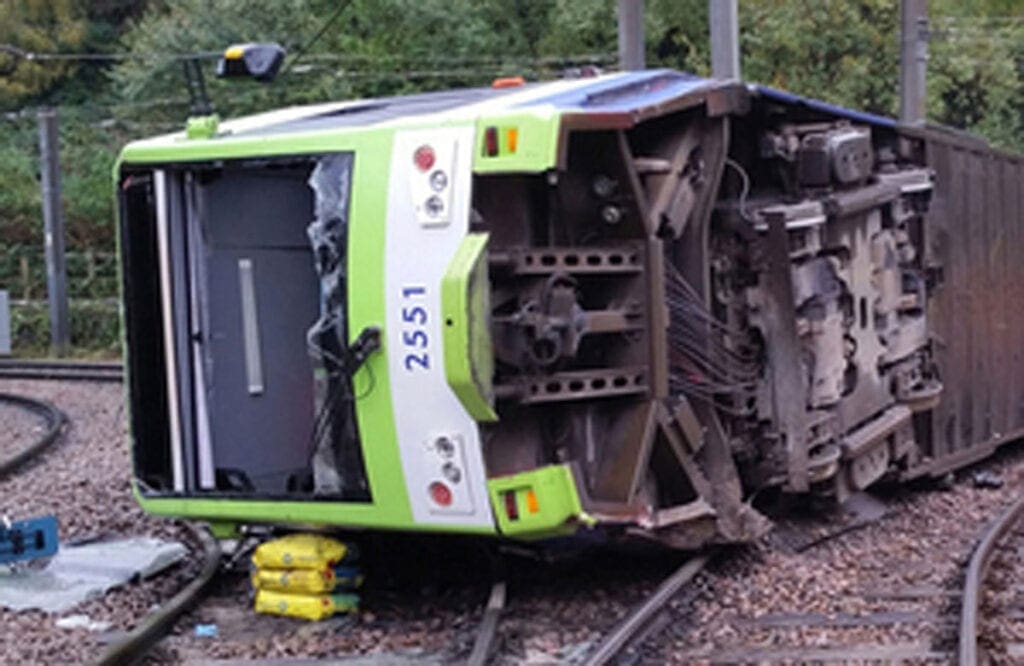
No “significant defects” were found in a tram that overturned in Croydon, killing seven people, an inquest into the deaths has heard.
Dane Chinnery, 19, Philip Seary, 57, Dorota Rynkiewicz, 35, Robert Huxley, 63, and Philip Logan, 52, all from New Addington, and Mark Smith, 35, and Donald Collett, 62, both from Croydon, died after the accident on November 9 2016.
Also see
- RAIB inquest into 2016 Croydon tram crash opens
- Croydon tram crash driver ‘using sick notes to avoid inquest’
A further 51 were injured as the tram toppled over and spun off the tracks after hitting a curve at 73kph (45mph) just after 6am that morning, despite a 20kph (12mph) speed restriction being in place. Read the original Rail Accident Report for the overturning of the tram at Sandilands junction, Croydon here.
An investigation by the Rail Accident Investigation Branch (RAIB) found that driver Alfred Dorris may have slipped into micro-sleep during a 49-second stretch of “low work” track, where he was not required to do much to control his tram.
The jury at the inquest at Croydon Town Hall heard on Wednesday that after the incident happened, electrical components of the tram were checked for any faults.
RAIB inspector Richard Brown, who carried out the testing and fault finding, said: “Most of them had no significant defects.
“The running wheels, we found some lipping – essentially what that means is there’s an edge on the wheel that would normally be removed during maintenance, that can affect the ride of the tram, but well within tolerance.”
Mr Brown went on to list other parts of the tram in which “no problems” were found.
He said: “Also worth noting that the majority of the tests we were going to do, were going to cause damage to the tram one way or another.
“We were going to change the evidential state of it, and so we invited all interested parties to attend the testing, and where we found a defect which we considered to be accidental damage, it was discussed to make sure all parties were happy it was an accident.”
Among the other components tested were the emergency brake, the traction brake controller and the windscreen wiper, in which “no faults were found”.
Just “two minor faults” were found after all the tests took place, Mr Brown said.
The jury had earlier heard that the tram reached up to 84kph (52mph) at its quickest speed before the incident took place, and there was “no movement of the traction brake controller from the drive position”.
RAIB inspector Richard Harrington, reading what was concluded at the time of the incident, said: “Although some doubt remains as to why the driver did not apply sufficient braking, the RAIB has concluded that the most likely cause was a temporary loss of awareness in the driving task, during a period of low workload, which possibly caused him to micro-sleep.
“It is also possible, when regaining awareness, the driver became confused about his location and direction of travel.”
He added that the driver’s actions could have been influenced by a number of factors, including low workload, fatigue due to insufficient sleep, and disorientation.
Asked if he felt the driver’s speed should be considered a “causal factor”, Mr Harrington replied: “That’s not correct, no.”
The inquest continues.


